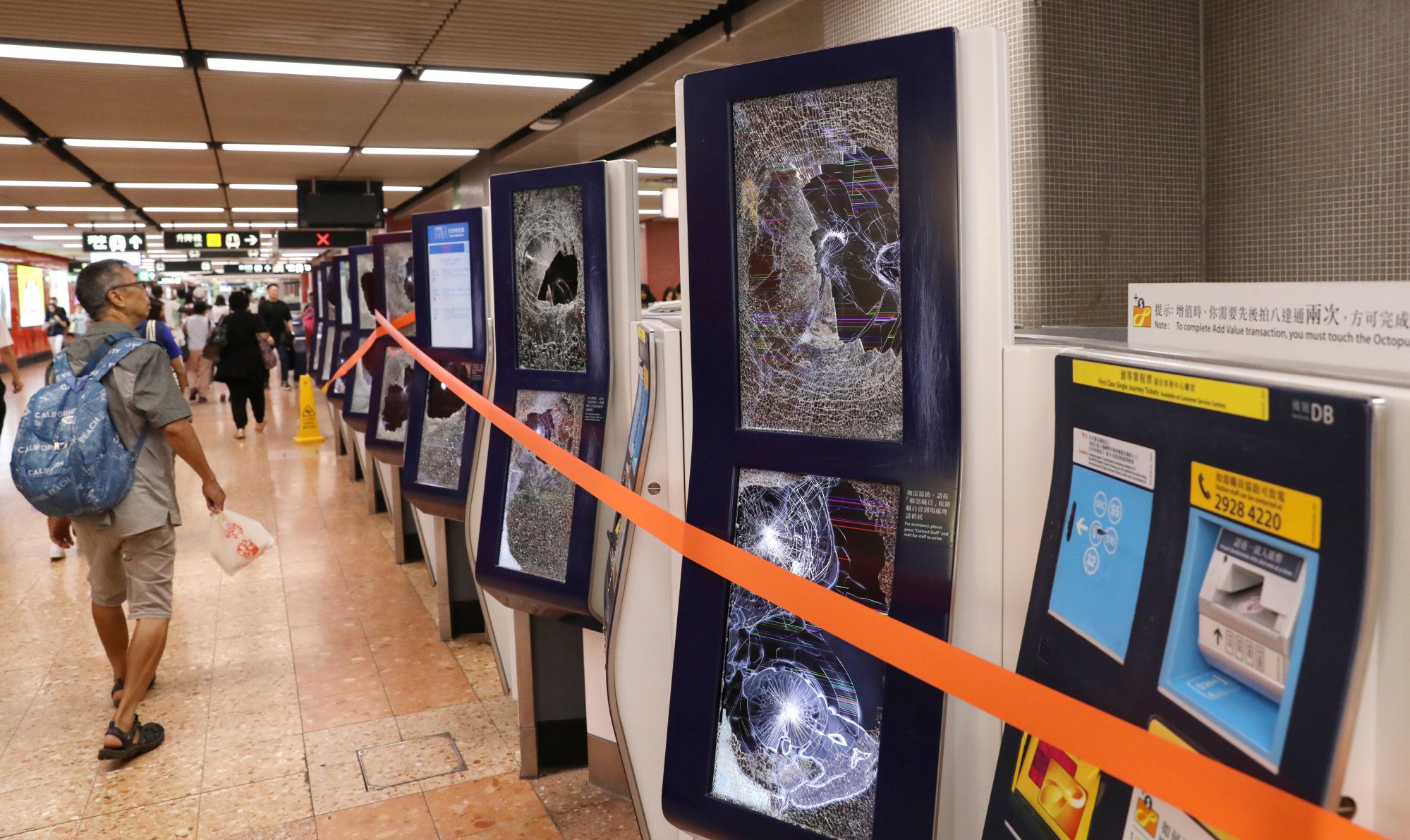
Most damage caused in 2019 Hong Kong protests repaired; protective fencing also removed from some bridges after review by authorities
- Acting secretary for transport and logistics Liu Chun-san says most vandalised amenities, which had HK$65 million repair bill, now fixed
- Protective fencing designed to stop missiles being thrown off them removed from six bridges
Acting secretary for transport and logistics Liu Chun-san said in a written reply to the Legislative Council on Wednesday that almost all the damage across the city had been fixed.
Authorities revealed in 2020 the bill for repairs for damage caused by protesters over the seven months of social unrest had hit HK$65 million (US$8.4 million).
MTR Corporation property was a frequent targets for vandals during the political turmoil, as they set fire to station entrances and smashed ticket machines.

The rail giant – in which the government is the majority shareholder – had to fork out HK$500 million for repairs.
There was damage to 85 heavy rail stations and 63 light rail stops, as well as 20 lifts or escalators and 1,320 rubbish bins.
The destruction across the city also included 740 sets of traffic lights, 22,000 square metres (236,800 sq ft) of paving blocks on footpaths, 60km (37 miles) of railings along walkways, 2,700 traffic bollards and 300 traffic signs.
About 700 highway structures, 1,500 lamp posts, bus stops and facilities at public transport interchanges were also targeted.
Liu said police and other departments would carry out regular reviews and fit or remove protective devices on facilities if the situation and public safety required action.
‘Plotters planned to use 2 bombs with 10kg in explosives to kill Hong Kong police’
“For example, the Transport Department installed protective devices for the traffic signal controllers and protective meshes for pedestrian traffic signal heads at some major road junctions,” he added.
“After coordination with the police force, as well as careful consideration and balancing of factors such as the installation and maintenance costs and the social conditions, the department has ceased the installation and removed the protective devices installed earlier.”
Liu added some temporary fencing on vehicle or pedestrian bridges, put up to stop people throwing missiles onto nearby roads to disrupt traffic, had been removed after “coordination with the police and taking into account various factors”.
They included those at Lion Rock Tunnel Road in Kowloon City, the Eastern Harbour Tunnel in Kwun Tong and Nam Cheong Street in Sham Shui Po.
The Highways Department installed temporary fencing at about 60 footbridges to protect the public over the period.
“[We] will continue to review the need for the relevant measure,” he said.
‘Plotters planned to use 2 bombs with 10kg in explosives to kill Hong Kong police’
Liu said authorities had also examined materials used for public works and strengthened their design to minimise the risk of damage. Changes included the replacement of some paving blocks with more durable concrete or the application of joint stabilising sealer and the reinforcement of railing connectors.
Suppliers have also been asked to use tougher, fire-resistant materials in the manufacture of new recycling bins.
Protesters often used railings as roadblocks and dug up paving bricks to use as missiles in clashes with police during the unrest, which started in June 2019.
Yau Tsim Mong suffered the most damage among the city’s 18 districts during the unrest. The area had 121 sets of traffic lights damaged and 9,900 square metres of paving slabs dug up.

